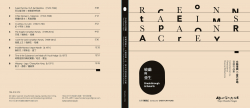Time is the substance I am made of
in memoriam Jonathan Harvey
Time is the substance I am made of.
It is a river that carries me away, but I am the river.
It is a tiger that annihilates me, but I am the tiger.
It is a fire that consumes me, but I am the fire.
— Jorge Luis Borges
Program Note
Mahayana Buddhism teaches that suffering is caused by the false belief that things exist in and of themselves, that the things that I desire are objects independent of myself and that there is even an “I” that desires. This notion, that all things possess distinct, inherent being, that truth is stable and permanent, has dominated Western thought since before the time of Plato. And yet, impermanence is a fundamental quality of the cosmos; one need only remember that all the seemingly absolute, immutable things of existence are dependent on an ever changing, expanding and accelerating universe.
Similarly, we tend to view time as an ordering process externally imposed on distinct and separate objects. Yet if there are no inherent objects, if I am not a thing, but a kinetic state of continuous transformation, one can begin to understand what Borges means when he writes, “Time is the substance I am made of.” The ostensible ravages of time inhere in the essential nature of all things — “it is a fire that consumes me, but I am the fire.”
Music is the consummate embodiment of this conundrum. Does musical material exist outside of time or is time itself the substance of music? This piece explores the inherent temporality of musical material and technique, calling into question the notion of permanence usually ascribed to musical structure and the work-concept itself. The musical narrative unfolds through temporal ambiguity and conflict, while navigating the underlying unity of seemingly incongruous objects from the world of experience — bells, water and fire. The harmonic signature of the great bell of Winchester Cathedral, which is central to Harvey's Mortuous Plango, Vivos Voco, plays a role in this work as it melds with and disintegrates into a variety of harmonic and inharmonic timbres and harmonies.
